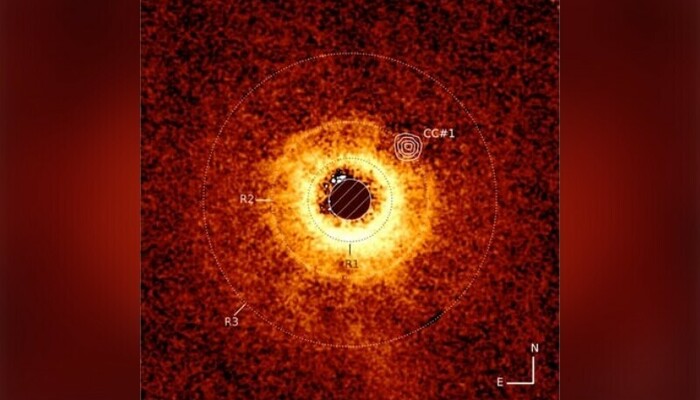James Webb Telescope Captures First Image of Distant Exoplanet

The James Webb Space Telescope has captured its first direct image of an exoplanet—TWA 7b—a major breakthrough in the hunt for new worlds beyond our solar system. This gas giant, located roughly 100 light years away, marks a new chapter in the telescope’s mission to explore deep space since its deployment in 2022.
A Game-Changer in Exoplanet Detection
Until now, Webb focused on studying known exoplanets, examining their atmospheres and compositions. But this marks the telescope’s first discovery of a previously unknown planet. According to a study published in Nature, TWA 7b is at least ten times lighter than any other exoplanet directly imaged so far, with a mass similar to Saturn.
Overcoming Cosmic Challenges
Capturing such distant and faint planets is notoriously difficult. They emit little heat and are often hidden by the brightness of their host stars. Webb solves this with its MIRI instrument and a coronagraph, which blocks starlight much like a solar eclipse. This method allowed scientists to isolate and photograph the faint glow of TWA 7b.
Read: SpaceX Megarocket Explodes During Test at Starbase
Why TWA 7 Was the Perfect Target
The host star, TWA 7, is a young celestial body only 6.4 million years old. Unlike our Sun, it is still surrounded by a thick disk of gas and dust, a common nursery for planet formation. This disk, viewed from above, offered astronomers a clear look at its rings and inner structure.
Inside a gap in the second ring, Webb detected a bright object that turned out to be the planet. Researchers ruled out other sources, confirming it was not part of our Solar System or a distant galaxy.
The Search for Smaller Worlds
Lead researcher Anne-Marie Lagrange explained that Webb’s imaging power increases the chances of detecting smaller planets by tenfold. While TWA 7b is a gas giant, astronomers aim to one day spot rocky, Earth-like planets.
Future missions, including the Extremely Large Telescope in Chile, may take that goal even further—offering new hope in the search for life beyond Earth.
Follow us on Instagram, YouTube, Facebook,, X and TikTok for latest updates












